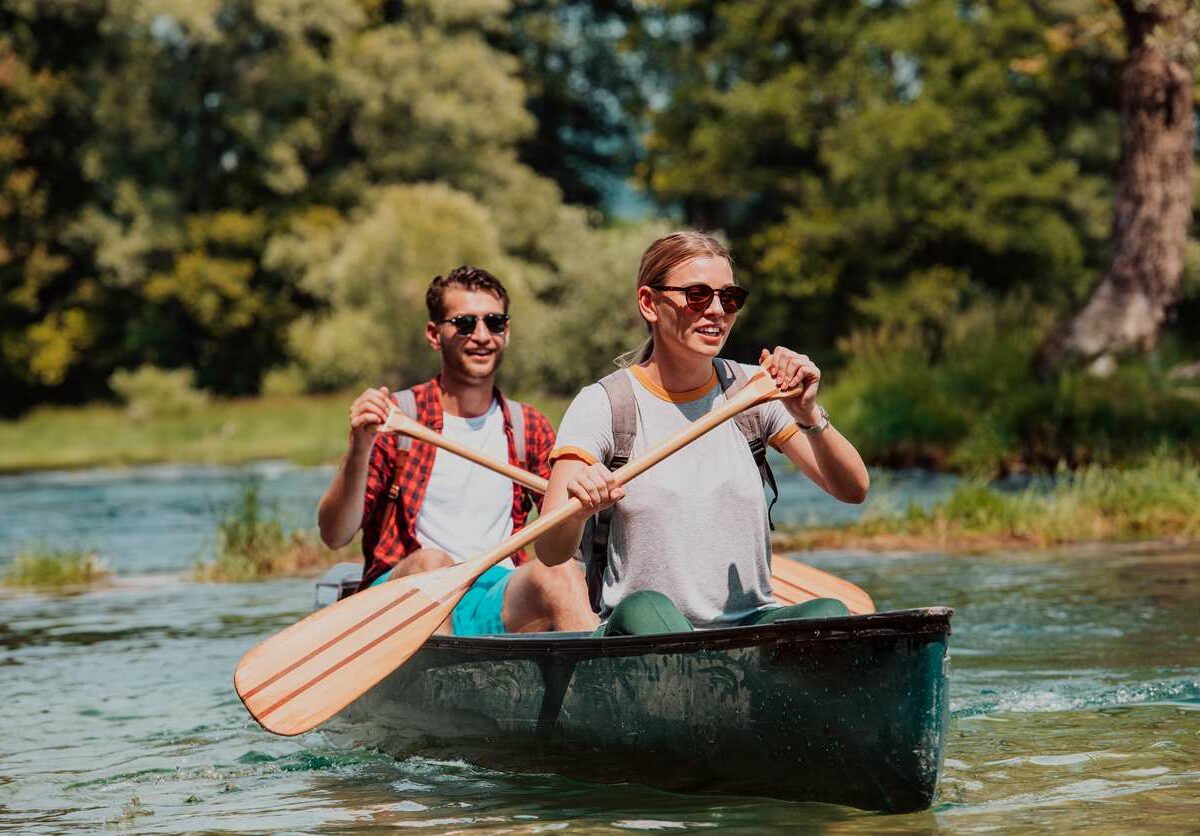How to Stay Safe While Enjoying Pennsylvania’s Waterways

For those who love to paddle, Pennsylvania offers a wealth of options when it comes to getting on the water. The state boasts over 80,000 miles of streams and rivers as well as 76 natural lakes and hundreds of reservoirs. With so many options, there’s endless adventures to be had on Pennsylvania’s waterways. Read on to find out about some of these places as well as learn about the state’s rules and regulations about kayaking in Pennsylvania.
Where to Kayak in Pennsylvania
Lakes
Located in the Pocono Mountains, Lake Wallenpaupack is the largest lake in Pennsylvania. It offers over 50 miles of shoreline and is perfect for kayaking, with scenic views and calm waters.
Situated in Central Pennsylvania, Raystown Lake is a popular destination for outdoor activities, including kayaking. It spans over 8,000 acres and offers opportunities for both recreational paddling and exploring coves and inlets.
Found in Promised Land State Park in Pike County, Promised Land Lake is a serene and picturesque spot for kayaking. The lake is surrounded by forests, and you can paddle along its calm waters while enjoying the tranquil environment.
Rivers

The Susquehanna River, the longest river on the East Coast, runs through the state. In Lancaster County, there’s The Susquehanna River Water Trail which is a 53 mile stretch. There are a variety of access points to get on this part of the waterway. There’s a lot of places to stop and explore, fish, or picnic.
The Delaware River is a fantastic option for kayaking in eastern Pennsylvania. You can enjoy calm stretches as well as some Class I and II rapids. The section between Milford and Easton is particularly popular.
The Allegheny River in western Pennsylvania provides diverse kayaking opportunities. You can enjoy both tranquil sections and more challenging rapids, especially in the Allegheny National Forest.
Pennsylvania Permit Requirements for Kayaks
All kayaks and canoes launched in Pennsylvania state parks and forests must display documentation when they are out on the water. Before launching your kayak or canoe, be sure to obtain one of the three following permits:
1. Boat registration from the Pennsylvania Fish and Boat Commission. In order to get this license, you’ll need the title and the Hull Identification Number that’s printed on the starboard side of your boat. This registration costs $22 and is valid for two years. This option is mandatory for power boats but is available for kayakers. One of the upsides is that if your kayak is lost or stolen, it may be easier to track down.
2. Launching permit. This option is similar to the registration option. The cost is $22 and is also valid for two years. However, it’s not reciprocated if you travel to other states that require a permit. You also won’t be sent renewal reminders in the mail.
3. DCNR: mooring permit, which gives you the right to dock your boat at a state park. You’ll need to contact the specific state park you want to leave your boat. Be advised that this process is a bit more expensive and you’ll only be able to dock your boat for part of the year. You’ll have to secure another place to store it during the winter. You’re not guaranteed a spot for the following year; boaters will have to renew their spot each year.
Pennsylvania Kayak Safety Rules and Regulations
Pennsylvania wants people to get out and enjoy the water, but to do so safely. As such, there are a few requirements and supplies kayakers need to carry with them on their boat.
1. An Emergency Sound Device
This might be a whistle or horn that can be used in case of an emergency. A whistle is easiest as it can be worn around your neck, making it easy to locate if you need to use it.
2. Personal Floatation Device (PFD)
All kayakers MUST have a PFD onboard, no matter their age or how good they are at swimming. Paddlers under the age of 12 must wear their PFD at all times. Adults are required to wear their PFD if they are paddling between November 1 and April 30.
3. A Light Signaling Device
Kayakers must have a light with them to use as a signaling device in cases of emergency.
Storing Kayaks

Kayaks can range from 6-12 feet in length, making them bulky and difficult to store at home, especially for paddlers who live in apartments or homes with limited storage options. Paddlers might find it more convenient to store their boats as well as their required safety items in a location outside of their homes and near the water.
For those paddlers in Lancaster County who like to get out on the local waterways, consider storing your kayaks and canoes at the Kwik-Stor Self-Storage, located on Main Street in Ephrata. However, there are a variety of locations scattered around the great state of Pennsylvania. Contact Freedom Storage and let us help you find a convenient place to store your kayaks and canoes!